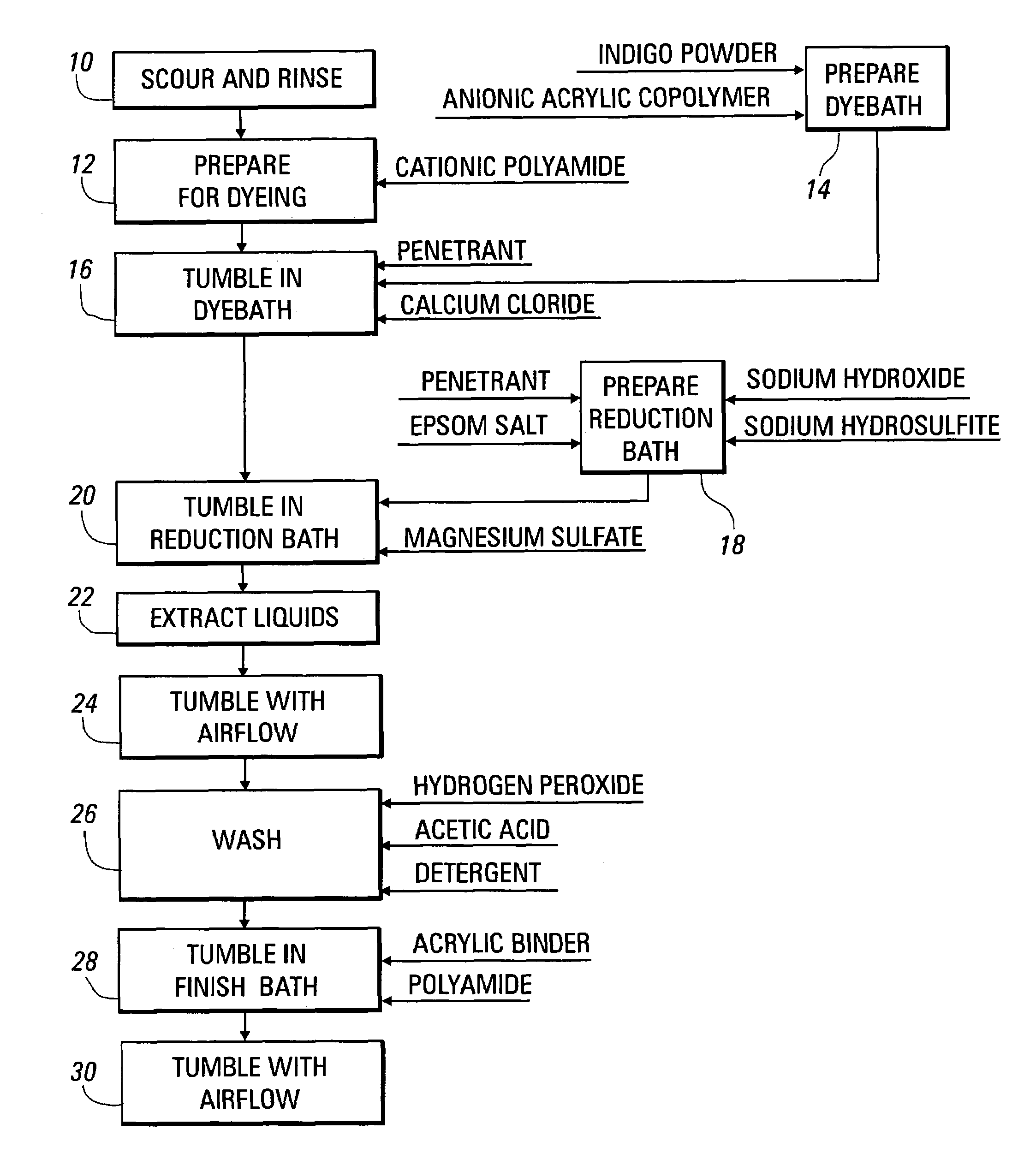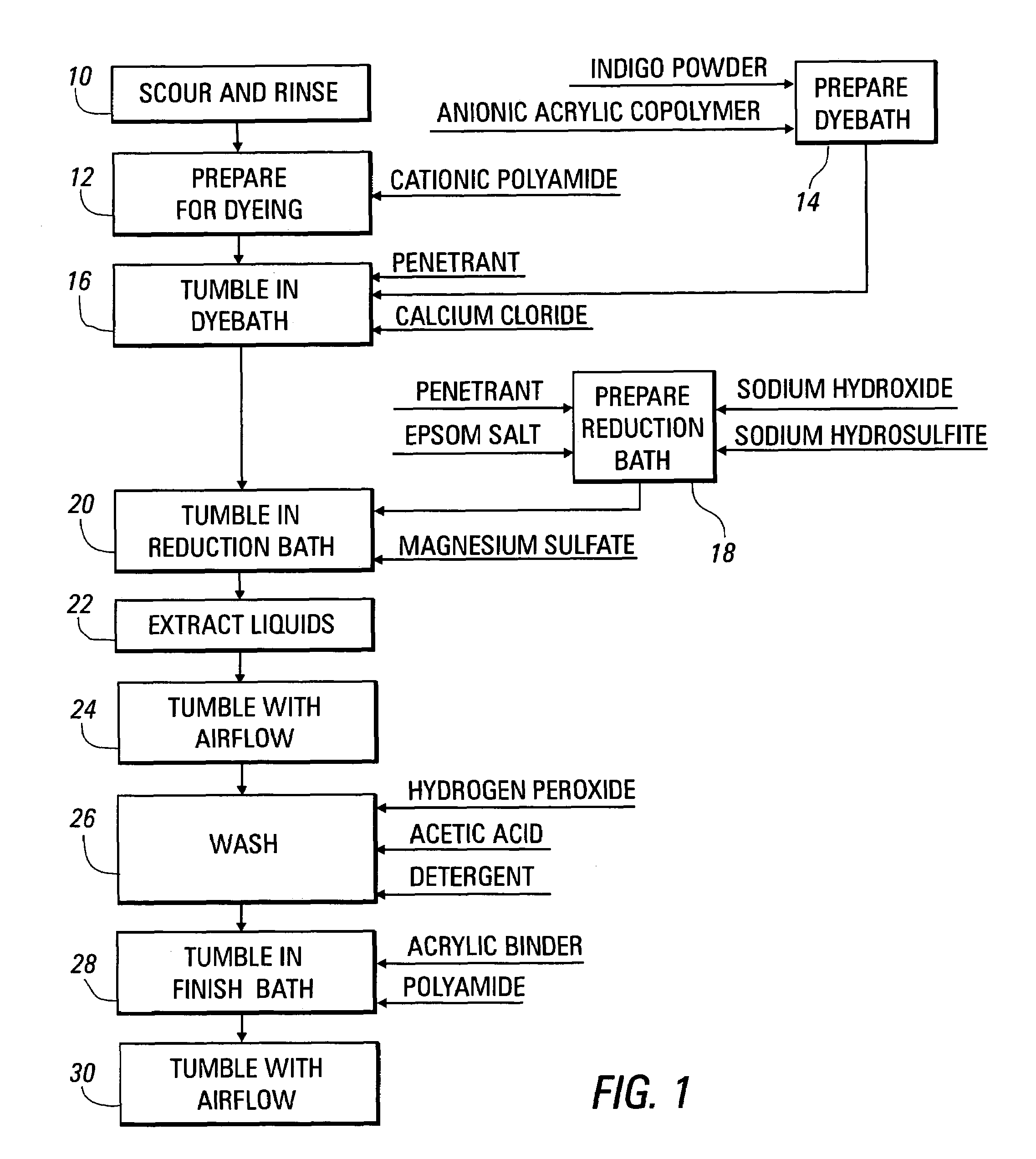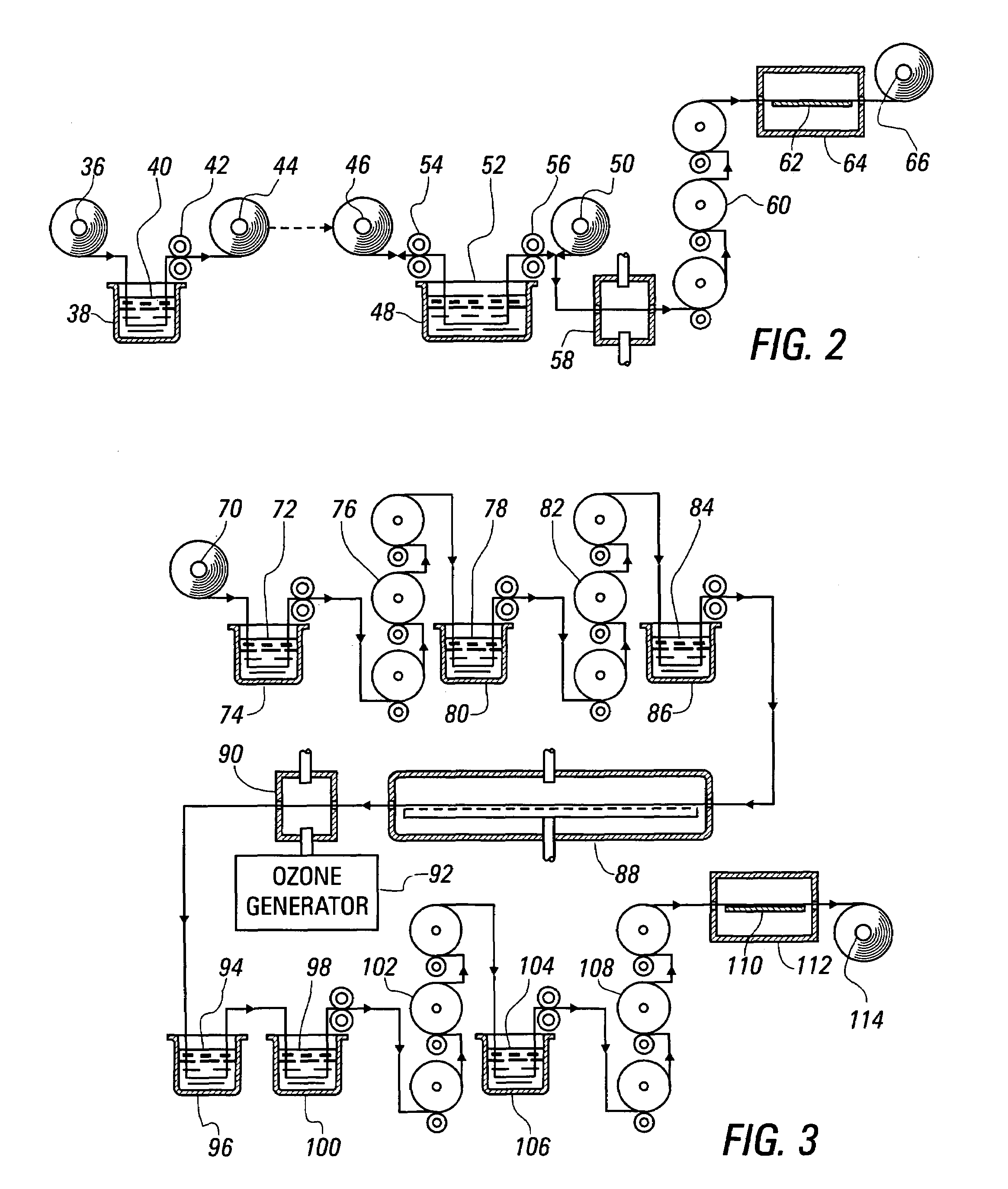Method for dyeing fabric materials with indigo, other vat dyes, and sulfur dyes
a technology of indigo and fabric materials, which is applied in the direction of dyeing process, sulfur dye, porphine/azaporphine, etc., can solve the problems of labor-intensive steps, limited commercially successful processes for dyeing cotton fabrics with indigo, and difficulty in establishing a consistent and reproducible dyeing process, so as to achieve effective inventory control and accelerate the neutralization of cellulose textile substrates
- Summary
- Abstract
- Description
- Claims
- Application Information
AI Technical Summary
Benefits of technology
Problems solved by technology
Method used
Image
Examples
example 2
Dyeing a Cotton Fabric in a Pad-Jig Process with Indigo Pigment
[0060]In a second exemplary application of the invention, 12-ounce cotton twill is dyed in the pad-jig process described above in reference to FIG. 2. Before beginning the process, the fabric is desized and scoured. During padding within the pad vessel 38, the fabric picks up about 71% of the polyamide in the bath 40. After the oxidation baths within the jig bath vessel 48, the roll of fabric is completely oxidized to a true indigo blue color, and the bath is clear.
example 3
Continuous Pad Steam Dyeing of a Cotton Corduroy Fabric with Indigo
[0061]In a third exemplary application of the invention, a corduroy cotton fabric material was desized, scoured, and bleached. Then, the material was dried and run through the process described in detail above in reference to FIG. 3.
example 4
Dyeing a Woven Flax Fabric on a Continuous Pad Steam Dyeing Range with Vat Dyes
[0062]In a fourth exemplary application of the invention, a woven flax fabric having an eight-ounce plain weave construction was desized, scoured, and bleached. Then, the material was dried and run through the process described in detail above in reference to FIG. 3, using a dye pad formula including 10 percent vat brown dye CI 5 and 2 percent vat grey dye CI 22.
PUM
| Property | Measurement | Unit |
|---|---|---|
| temperature | aaaaa | aaaaa |
| concentration | aaaaa | aaaaa |
| concentration | aaaaa | aaaaa |
Abstract
Description
Claims
Application Information
 Login to View More
Login to View More - R&D Engineer
- R&D Manager
- IP Professional
- Industry Leading Data Capabilities
- Powerful AI technology
- Patent DNA Extraction
Browse by: Latest US Patents, China's latest patents, Technical Efficacy Thesaurus, Application Domain, Technology Topic, Popular Technical Reports.
© 2024 PatSnap. All rights reserved.Legal|Privacy policy|Modern Slavery Act Transparency Statement|Sitemap|About US| Contact US: help@patsnap.com










